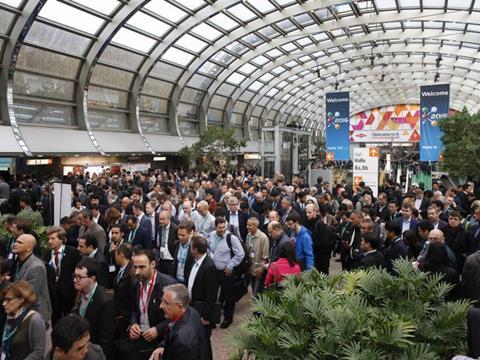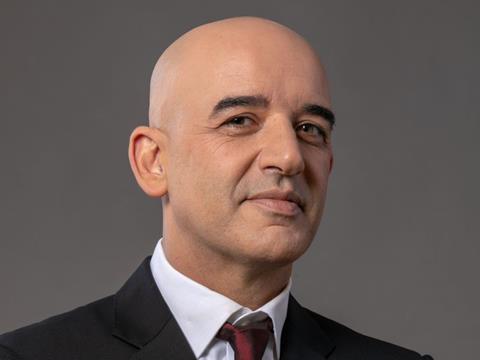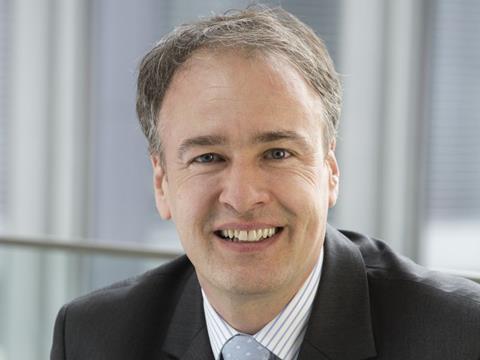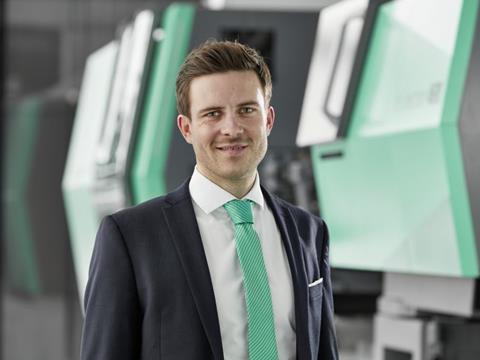
At the start of K 2019, Packaging Europe asks some major players in the plastics packaging industry a few pertinent questions about the big issues the industry faces today and finds out about their sustainability drive and innovations.
We speak to Haim Za’afrani, vice president of rigid packaging sales at Husky, Bertram Stern, packaging and circular economy manager at Arburg, Helmut Huber, COO Brückner Maschinenbau GmbH & Co. KG and Frank Schuster, vice president at Engel Packaging.
What are the key market challenges for the plastics industry today and how is it coping with them (e.g. political-macroeconomic volatility; fluctuating oil prices; and the ‘war on plastics’)?
Frank Schuster: The long period of economic growth is now experiencing a slowdown, as has been predicted for many years. Overall, ENGEL is clearly feeling the effects of the slowdown and we currently see no signs of a short-term economic recovery. The primarily political causes make forecasting difficult. The automotive industry is hardest hit. While we are currently well on track in the packaging sector, projects here are also being postponed due to uncertainty. Among the driving forces behind growth and innovation which are facing the slowdown are digitalisation, increasing quality awareness worldwide and the establishment of a circular economy for the plastics industry. The extent to which these issues can counteract the decline is equally difficult to assess today. We are technologically very well equipped to support our customers in solving the new challenges. On the subject of circular economy alone, we are presenting five exhibits at the K with innovative technologies which clearly show that digitalisation is an important enabler for closing material cycles at very different levels. ENGEL has been dealing with this topic for a long time and was one of the first plastics machinery manufacturers to sign the New Plastics Economy global commitment of the Ellen MacArthur Foundation. It networks the players, and this is precisely the prerequisite for planning the entire product life cycle through to recycling as early as the product development stage. In future, we will cooperate even more closely with the other companies along the value chain.

Haim Za’afrani: The sustainability of plastics packaging has been challenged, and we can’t ignore that. The impact of plastics packaging on the environment and oceans has been emotionalised. This has triggered ambitious sustainability commitments from most of the large players, and predictably, politicians have also responded strongly with legislation.
In the past, not enough focus was put on what happens to a package after its contents have been consumed. Our industry should help build bridges from consumer package back to raw material, to waste free, convenient, food safe packaging solutions. The industry has gone through major transformation and is now focusing on eliminating plastic pollution. The first step is putting the material back by motivating society to get the packaging back into a consolidated recycling stream. This means creating incentives for consumers to get the packaging back in a convenient, simple process. The second is utilising the collected material by incorporating more post consumer recycled resin into packages. This will generate an end market demand to create the right economy for recycling and a self-sustaining circular economy.
Bertram Stern: One thing is clear to us: All of us in the plastics sector – especially in the packaging sector – are confronted with the huge and perhaps single most important complex of topics faced by our industry and by society in general: circular economy and resource efficiency. One of the challenges is that plastic is often seen only in terms of being a waste product. Instead, plastic must be used sensibly and responsibly, and in the best-case scenario, it belongs in a closed recycling loop. However, a circular economy can only function properly if all elements within the value-added chain work properly.
Helmut Huber: Trade conflicts, the discussion about plastic waste, as well as the difficult general global political situation makes it necessary to recognise future topics, trends and application possibilities very early. Brückner Maschinenbau established a well-functioning scouting system and additionally set up a “New Business Development” department, ensuring that opportunities are assessed and appropriate line concepts and solutions are offered, thereby opening new markets.
What effect do you expect the EU single-use plastics directive and recycling targets to have on the industry?

Frank Schuster: So far, the laws have had little influence on ENGEL's business. Nevertheless, we are concerned about this development, because the new laws do not always provide more sustainability. A move away from polymer materials often results in a poorer CO2 balance, especially for packaging. Here we would like to see a more differentiated view from politicians and no further uncertainties on the part of consumers. Rather, it is necessary to provide people with better information and to increase recycling capacities. There will also be new technological challenges. For example, by 2021 caps must remain attached to the bottle, which requires new product designs. We are facing a paradigm shift. In future, costs will no longer necessarily be the most important driver.
Haim Za’afrani: I believe the EU plastics directive will have an impact, starting with a potential consolidation of the range of plastics used for packaging, with a distinction between easy to recycle plastics like PET and plastics that are not so easily recyclable today. We foresee potentially a policy focusing on reduction or bans. We would anticipate a shift in packaging items to more recyclable materials.
The recycling and collection targets within the directive are driving innovation and investment to get more recyclate in the system, and a bigger supply of recycled PET is needed to feed demand. We already see a huge lack of supply forthis. The requirement for tethered closures is also creating panic among customers. At Husky, we focus on developing the best solutions for better closures and using recycled materials in packages.
Helmut Huber: Plastic is an extremely beneficial material, but we all have to take care how to handle it in the sense of reuse – reduce – recycle. We appreciate clearly defined targets, as long as they consider all involved components. For example, besides the plastic material itself the colour systems used play an important role for recycling. In addition, environmental aspects, e.g. the CO2 footprint, energy consumption in production and hygiene should not be forced into the background. In this context political guidance could support our industry’s sustainability goals – if this guidance is long-sighted and goal-oriented.
How do you view the overall technological progress towards a circular economy in plastic packaging? Could you talk about particular areas of innovation (e.g. design for recycling; monopolymer solutions; new sorting technologies; feedstock recycling) that you believe offer especially significant hope of progress?
Frank Schuster: ENGEL has defined four areas in which we, as a machine building company and system solutions provider, can already provide concrete support to plastics processors today for more sustainable production and closed material cycles. We use intelligent assistant systems to help us increase process consistency and thus create the conditions for using recycled materials in a broader spectrum, and for higher-value applications. We use innovative processing technologies to help further increase the proportion of recycled material in sandwich components as well as design for recycling, which means that we work closely with processors during product development to reduce material usage and enable the subsequent recycling of products. Furthermore, we will strengthen our consulting services in the area of upstream processes in order to optimise the processing of recycled materials for injection moulding.
Haim Za’afrani: For PET, the future already exists. For example, our customer Ice River Springs Water in Ontario,Canada, has been using recycled PET in their water bottles for years. There is a lot of innovation. This is why we believe innovation and sustainability go hand in hand and recently merged our sustainability department with our innovation department. Collaboration is another important area. It is important for the entire value chain to work together. We are also working on design for circularity, lightweighting and incorporating PCR. This new development at Husky will enable our customers to bring more than 60,000 tons of PET annually into the circular economy within the next 24 months. The system works by purifying recycled materials and eliminating intermediate steps.

Bertram Stern: In June 2019, the Arburg Packaging Summit focused on the currently discussed topic of plastics. The event – which was attended by around 120 guests from all over the world – was conceived to bring together leading experts from industry, research and professional associations, providing a platform for sharing knowledge on trends, resource efficiency and the circular economy in the packaging sector. The event demonstrated the challenges but also the new opportunities for the packaging industry. Manufacturers of injection moulding machines, moulds and materials, as well as recycling experts, must all work together along the entire value chain. At this event, it was clear for all to see that the spirit and will to do so exists. Only by working together will it be possible to develop new solutions and ensure that valuable used plastics can be recycled and efficiently re-purposed in the manufacture of new products.

Helmut Huber: The focus of Brückner Maschinenbau as film stretching technology supplier is on the production of single-origin structures with the highest recyclability: All raw materials originate from a common polymer group and can therefore be recycled to high-quality re-granulate. These mono-material structures from PP, PE or PET meet the highest requirements for thermic and dynamic stability and display excellent barrier properties. Thanks to their minimal thickness, they are also extremely resource-efficient.
How do you make sure that your pack/packaging material is as recyclable/environmentally friendly as possible?
Haim Za’afrani, Husky: At Husky, we are heavily involved with PET and we see ourselves as a sustainability partner. We offer a range of solutions to enable the circular economy.
We are dedicated to making positive impact by aligning the goals of sustainability with the many positive attributes of plastic packaging. Husky focuses on designing not just the best package but one that can be easily recycled with our downstream partners. Cooperation is key. Our modular solutions are built on global platforms to incorporate PCR and evaluating new and alternative materials. We also focus on energy efficient equipment with the goal to be carbon neutral by 2025. On top of that we are also getting ready to generate alternative materials and alternative polymers. A lot of education and learning still must take place, but we have our innovative centre ready to deal with these alternative materials.
Bertram Stern: At Arburg we have been working for a long time on the range of topics associated with resource efficiency and circular economy because environmental protection and the gentle use of resources are deeply rooted in our corporate philosophy. Therefore we are engaging in this discussion, and not hiding from it: We have understood the problem, we have recognised its magnitude and we are contributing towards a solution with all our powers.
Our strategy in terms of resource efficiency and circular economy and all of these related aspects and activities can be grouped together in our “arburgGREENworld” programme, which is based on four pillars. The first three pillars refer to the quotations for our customers and go by the names of “GREEN machine”, “GREEN production” and “GREEN services”. The fourth pillar goes by the name of “GREEN environment” and incorporates our in-house processes associated with resource efficiency and circular economy.
Important topics for the three customer-specific areas are minimisation of the CO2 footprint of the machines, processing of recyclates and bio plastics, improvement in production efficiency, use of innovative processes as well as consultancy advice on all aspects of applications technology, resources and energy efficiency.
With two examples, Arburg shows practical future applications using recyclates at K 2019. The production of cups demonstrates that thin-walled moulded parts of consistently high quality can be produced when processing new PP material together with recycled PP. In the second application, a PCR material derived from household waste is used to produce a durable technical product.
Around 30 per cent recycled material is used in the production of PP cups. For this practical example of a closed circular economy, Arburg cooperates with Erema, which provides recycled PP. In a cycle time of around four seconds, eight cups are produced on a hybrid Allrounder 1020 H in Packaging version.
In the second circular economy application, a PCR material (post-consumer recyclate) derived from household waste is used to produce a technical product. The PCR available on the market is processed by an electrical two-component Allrounder 630 A in a Profoam foaming process, the second material is TPE. The injection-moulded part is a machine door handle whose two halves are mounted in the mould. This is followed by partial overmoulding with the soft component.
Helmut Huber: Our new BOPE line concept makes the production of mono-material films with superior mechanical and optical properties possible. These are excellent to sort in waste separation and are ideal to recycle. Additionally, we developed a new inline coater for the production of extremely thin functional layers. Due to the extreme thinness, the layers don’t disrupt the sorting and recycling.
How does your company “make the case for plastics” by highlight its benefits, for example in the area of reducing food waste?
Helmut Huber: We have brought our own, Brückner Group wide campaign to life in 2017, called “Yes, We Care”. This project is an acknowledgement to our responsibilities in the matter of plastics and sustainability. It includes the knowledge transfer for a better understanding of the needs and benefits of plastic and its correct use. Our corresponding information material (booklets, video, traveling exhibition) are in great demand.
Frank Schuster: We cannot and will not have a world without plastics. It is only through the use of plastics that we will be able to solve some of the great challenges of our time. This includes sustainable mobility, but also world nutrition. Intelligent packaging solutions extend the shelf life of food and prevent food from spoiling before it reaches the consumer in many countries with long transport routes and poor infrastructure. We cannot dispense with these packaging materials, which are necessary for product protection, and plastics as packaging material here are the most efficient solution in most of the cases, both in the energy and material footprint as well as in production and transport. The prerequisite is to create collection systems and recycling possibilities for packaging. In cooperation with other companies in the plastics industry, we will therefore use our experience and know-how to ensure that people in all regions of the world will be able to handle plastics responsibly.
Haim Za’afrani: We believe that plastics, and in particular PET, is the best packaging material available today, with its properties being optimal from a cost, weight, carbon footprint, food safety and consumer experience point of view. It contains no BPA and is 100 per cent recyclable. It also helps to prevent food waste. In summary, plastics is needed by society, but without plastics waste. Until a few years ago, the focus was on energy, something that seems to have fallen by the wayside today. After all, PET is lighter weight than aluminium and glass. If plastic packaging didn’t exist, and somebody invented a new packaging material which is safe, light weight, can hold up to 100 times its weight, helps combat food waste and is recyclable – wouldn’t people jump on that and think that it is great?






